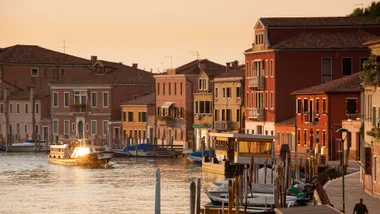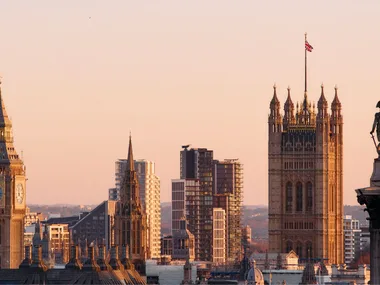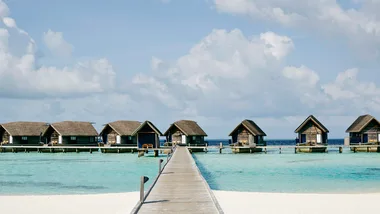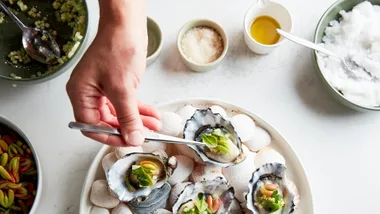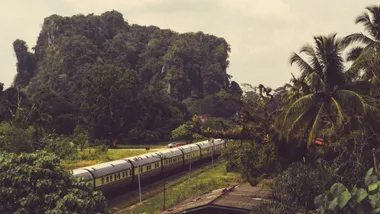GETTING THERE
Big Sur is a six-hour drive from Los Angeles, three hours from San Francisco, and two hours from San José, the closest major airport. The Monterey County Convention & Visitors Bureau’s website is a fount of helpful information about Big Sur and its surrounding areas.
STAY
Rooms from $879. 47900 Highway 1, +1 831 667 2200
Rooms from $358. 47080 Highway 1, +1 831 667 2105
Located on a hillside, this sophisticated retreat with 60 rooms has a modern design, top-notch restaurant and spa. Rooms from $650. 48123 Highway 1, +1 831 667 2331
EAT
Big Sur Roadhouse
Chef Brendan Esons is a whizz at top-notch Cali-cuisine, like seafood stew with local rock cod, crab and clams. 47080 Highway 1, +1 831 667 2370
The heartiest breakfast in town, and dinner in its candle-lit dining room is equally satisfying. 48865 Highway 1, +1 831 667 2378
Big Sur Bakery
A reliable spot for breakfast pastries, organic salads for lunch, and wood-fired pizze in the evening. 47540 Highway 1, +1 831 667 0520
SEE
Pfeiffer Beach
One of the few accessible beaches, with purple-hued sand (from minerals) and eye-catching rock formations. At the end of Sycamore Canyon Road. Mile marker Mon 45.64
Julia Pfeiffer Burns State Park
Take the short trail to catch sight of a year-round waterfall gushing onto the beach below. Highway 1, mile marker Mon 36
Pfeiffer Big Sur State Park
This vast park offers numerous campsites, picnic tables, hiking trails and swimming. 47555 Highway 1, mile marker 46.9
48603 Highway 1, +1 831 667 2574
55000 Highway 1, +1 888 837 2536
SHOP
Discover contemporary painting, sculpture, blown glass, and ceramics at this gallery designed by the same architect who did Post Ranch Inn. 48485 Highway 1, +1 831 667 3200
The Gallery At Ventana
A nicely curated selection of artworks, photography, ceramics and sculptures. 48123 Highway 1, +1 831 667 2787
Eclectic homewares, clothing, toiletries and toys can be found at this emporium. 48510 Highway 1, +1 831 667 2347
Flanked by the majestic Santa Lucia Mountains on one side and the rugged Pacific Coast on the other, California’s Highway 1 affirms its reputation as America’s most scenic freeway.
At least, that is, when it’s burnished with sunshine. A few hours before my arrival an ominous thunderhead rumbled in from the sea, recasting the green landscape in shades of grey and cloaking the highway with a mist of drizzle. As the rain pinged off my windshield, and waves crashed with unrelenting fury on the rocks 400 metres below, the zigzagging road took on a more perilous appearance. Navigating its twists and turns required the steely focus of a Formula One champion. I resisted the urge to rubberneck at the handful of breathtaking glass homes along the cliffs. Instead, I consoled myself with the thought of my ultimate destination: Big Sur.
Situated between Carmel in the north and San Simeon in the south, Big Sur is a place of transcendent beauty, of steep cliffs, serene hiking trails and picturesque beaches. Each summer the hordes descend like a plague of Patagonia-wearing locusts, clogging up its hotels and restaurants and bringing Highway 1 to a maddening halt. But in the winter, as I discovered, one can revel in the bliss of solitude. I was inspired to visit off-season by Henry Miller, who lived here between 1944 and 1962. “From November to February are the best months, the air fresh and invigorating, the skies clear, the sun still warm enough to take a sunbath,” Miller wrote. Indeed, Big Sur has a temperate climate, with less fog in winter than in summer. An invitation to stay at Post Ranch Inn confirmed my plans. I was in like Flynn, you might say.
I elected to fly into San José international airport, two hours north of Big Sur. By the time I arrived at the resort, shafts of sunlight filtered through the clouds, lending it a celestial glow. Designed by architect Mickey Muennig, the adults-only hideaway fuses luxury and sustainability with the pristine splendour of the site itself. His harmonious structures mimic the coastline: there are ocean rooms with curved walls, tree houses on stilts and more spacious cabins with cantilevered terraces and outdoor hot tubs. The staff here are so solicitous they offered me a glass of red wine when I arrived and drove me to my ocean room, up a hill behind the reception area. By dusk, a blanket of fog had eclipsed my spectacular view but it mattered little. The rooms are calibrated for comfort, with a digital sound system, a wood-burning fireplace and an oversized tile and slate Jacuzzi bathtub. I started a fire, poured a glass of Bowlus pinot noir and began to decompress.
A couple of hours later, I ventured to dinner. Outside, a strong gust of wind inverted my umbrella within seconds. “Are you okay?” a passing staff member inquired. I must have looked like Mr Bean in the middle of a meltdown. Admittedly, I was still adjusting to the elements. Sierra Mar, the hotel’s restaurant, soothed my jangled nerves immediately.
It’s an impossibly romantic spot – with chiaroscuro lighting and a dramatic glass wall – staffed by knowledgeable waiters and populated mostly by couples celebrating anniversaries. Chef John Cox, who joined in 2012, is known for his elaborate tasting menus featuring local ingredients such as Monterey red abalone and chanterelle mushrooms. To start, I ordered an appetiser of black sesame fried egg. Served with poached leek, steamed cabbage and a truffle emulsion, it tasted remarkably exotic.
In contrast, dishes like kale pappardelle with kale pesto, almonds and orange, and hay-roasted quail seemed like wholly modern inventions.
The next morning, after attending a yoga class in a yurt and plunging into one of the resort’s hot-spring pools, I was feeling euphoric. An on-site spa offers rarefied treatments, such as wildflower facials, jade stone massages and “vibrational resonance” sessions, in which tuning forks are used to calm frazzled energy fields. All I needed was a breakfast fork and a cup of robust Vittoria coffee, a recent addition to the menu. Metaphysical types have long flocked to Big Sur to find themselves. Not far from Post Ranch is Esalen Institute, which hosts a cascade of self-improvement workshops – everything from meditation to sexual intimacy, leadership training to shamanic cosmology. “Bring a rattle, a drum, a notebook”, read the course instructions for the latter class. Esalen accepts daytrippers for its spring-fed hot sulphur baths, but not in inclement weather. Still, I wasn’t about to let a little precipitation cause me any consternation.
Settlers to this untamed oasis only came a century ago, and the landmarks bear their names, Mount Manuel, Pfeiffer Ridge, Cooper Point among them. Electricity didn’t arrive until the early 1950s and it still doesn’t extend into some of the isolated mountainous areas. It’s “an inviting land, but hard to conquer”, Miller observed in Big Sur and the Oranges of Hieronymus Bosch, his 1957 memoir. “It seeks to remain unspoiled, uninhabited by man.” Certainly, hiking around the Ventana Wilderness later that day, I barely saw another soul. The rain had subsided enough for me to explore a short trail, where I encountered spectacular redwood groves, dramatic waterfalls, and a storybook menagerie including black-tail deer, grey squirrels and the magnificent indigo plumage of Steller’s jays. In winter, grey whales, sea lions, sea otters and monarch butterflies can be also spotted. Condors, which were facing extinction, have been successfully reintroduced to the area and one swooped overhead near the entrance of Julia Pfeiffer Burns State Park.
On day three, I traded my luxe clifftop room for a charming cabin by a creek at Glen Oaks Big Sur lodge. The 1950s-era motor inn has been meticulously updated by designer Steve Justrich in a pleasing blend of mid-century-modern and contemporary aesthetics, with bamboo floors and Eames chairs. My cabin was nestled in a copse of soaring redwoods trees, and soundtracked by the susurrus of the stream. Later that night I met with the lodge’s effusive general manager, Jeanette Kenworthy, and her family for dinner at Big Sur Bakery. Kenworthy has lived in Big Sur for 20 years. “It’s a tight-knit community where friends and neighbours pitch in during times of need,” she told me. “If someone’s water line breaks, everyone rallies together to help fix it.” After dinner I ignited my outdoor fire pit, toasted marshmallows for s’mores, and gazed at the patchwork of glittering stars above.
With about a thousand year-round inhabitants, Big Sur remains sparsely populated, if only for a precious few months a year. The residents include descendants of the original ranching families, artists and writers, along with Silicon Valley moguls. The hilly terrain, environmental restrictions imposed by local authorities and dearth of property available for development have kept Big Sur exceptionally well preserved. As a result, real estate prices are high, with land and home prices above $3.9 million. “It really hasn’t changed much,” artist Shelby Hawthorne, a lifelong resident, told me.
I was touring the esteemed Hawthorne Gallery, which showcases the work of 19 singular artists. “It’s like living in a state park but in the last five years the summer influx has become insane,” Hawthorne added. “It just means you can’t be spontaneous.”
You can during the cooler months. I sauntered into all the best restaurants without reservations. I admired McWay Falls, a 25-metre waterfall that drops from granite cliffs into the ocean, with half a dozen people. And when I stopped by Henry Miller Memorial Library, only one other bookworm was there. In summer, the library holds film screenings, live music and poetry readings. As I wended my way back to the airport in brilliant early-morning light, passing sublime redwood-lined canyons and turquoise beaches, I remembered Miller’s words. “At dawn its majesty is almost painful to behold. That same prehistoric look. The look of always. Nature smiling at herself in the mirror of eternity.”

Santa Lucia Mountains, California



